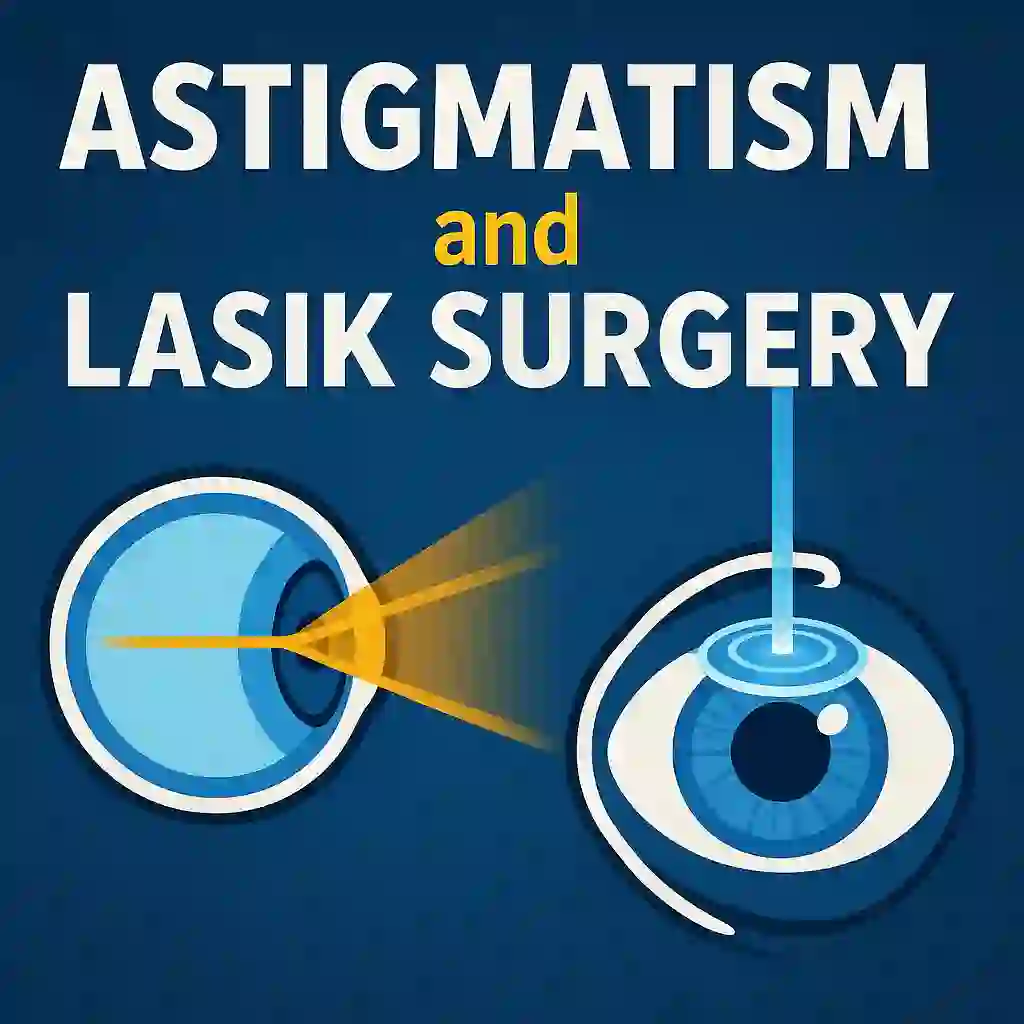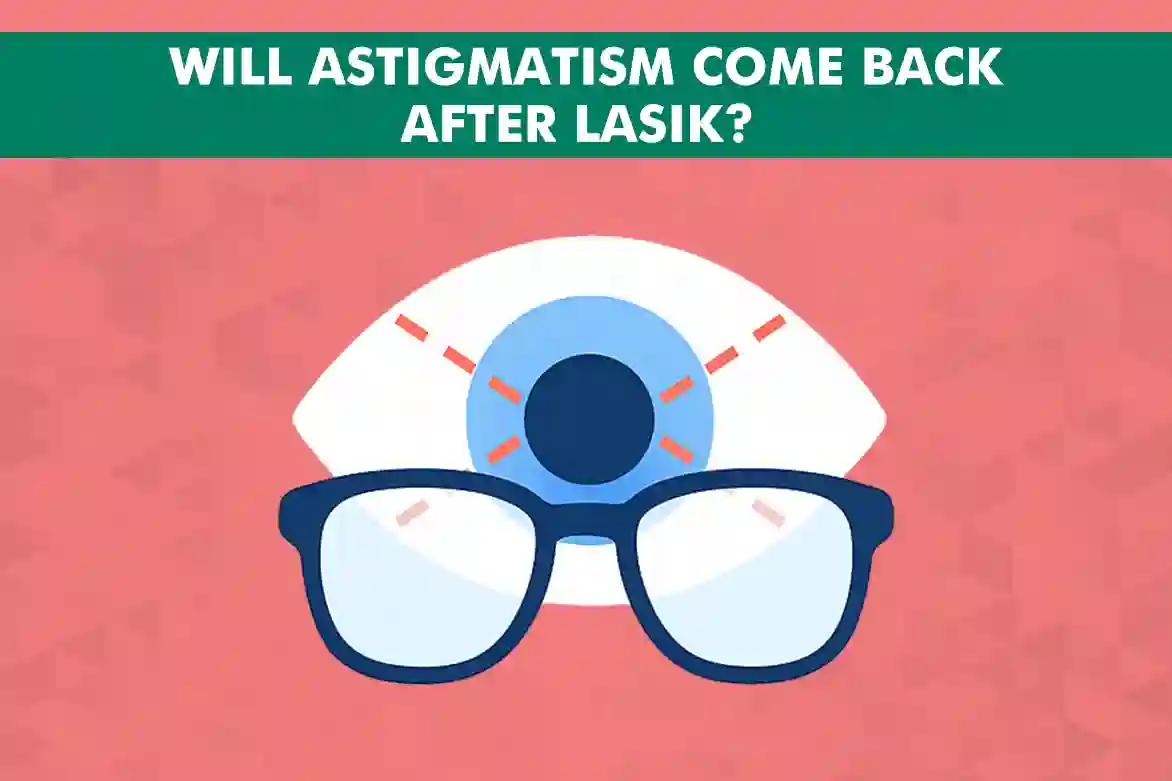LASIK surgery has dramatically transformed the landscape of vision correction, offering long-lasting clarity and improved visual quality to millions worldwide, especially those suffering from astigmatism. However, the question remains: Is the transformation permanent, or is there a risk of astigmatism after LASIK surgery? This in-depth blog by Planet Lasik addresses these concerns directly, helping you understand facts, practical tips, and reliable answers to safeguard your vision for the long term if you have chosen LASIK for astigmatism.
Understanding Astigmatism and the LASIK Surgery

Astigmatism is among the most prevalent refractive errors globally, estimated to impact nearly one in three individuals. This condition stems from an uneven curvature of the cornea or lens, which causes light to focus unevenly on the retina, resulting in blurred, shadowed, or double vision for objects both near and far. For many, astigmatism also brings frequent eye strain and headaches, affecting quality of life and daily performance.
LASIK—Laser-Assisted In Situ Keratomileusis—employs precision excimer laser technology to correct these irregularities with remarkable accuracy. During a typical LASIK procedure, detailed corneal mapping and custom treatment plans help ensure tailored results. The surgery itself is quick (about 10–15 minutes per eye), virtually painless, and requires minimal recovery time. Many people return to work or their daily routines within a day, and sharp vision is often restored within hours.
Facts for LASIK Outcomes for Astigmatism Correction
| Success Rate | Over 96% within the first year achieve 20/20 vision or better |
| Time to Vision Improvement | Same day to 24-48 hours |
| Patient Satisfaction | 95–98% report high satisfaction with vision post-surgery |
| Safety Record | Low complication rates (<2% for major issues) |
*Source: American Refractive Surgery Council, 2024 & Planet LASIK Clinical Observations
The Psychological Impact After LASIK
Clear vision after LASIK doesn’t just improve reading and driving—it enhances participation in sports, boosts work performance, and supports safer, more confident daily living. According to a report, 92% of patients reported an improved quality of life, and 89% stated that they felt more independent after surgery.
Why Could Astigmatism Return After LASIK?
Although LASIK’s success rates are excellent, some individuals experience LASIK regression of their astigmatism. Understanding these mechanisms helps set accurate expectations and allows patients to take preventative steps for preventing LASIK regression.
1. Natural Eye Changes:
Eyes continue to age after LASIK. The shape of your cornea can shift subtly due to hormonal factors, genetics, or lifestyle (e.g., excessive screen time or UV exposure), gradually changing vision.
2. Incomplete Correction:
When very high degrees of astigmatism are present, some subtle irregularities may persist after surgery or emerge as healing progresses. Advanced technology minimizes this risk, but it is not zero.
3. Healing Variability:
Every eye heals differently. Scarring, microfolds, or dry eye conditions can alter the final surface of the cornea. Proper post-op care is essential to minimize these effects.
4. Other Eye Conditions:
Conditions such as keratoconus, significant dry eye syndrome, or chronic allergies can impact how the eye heals and maintains post-LASIK corrections.
Detecting and Responding to LASIK Regression
Watching for early signs of LASIK regression helps protect your vision investment:
- Gradual increase in blurriness or ghost images
- Worsening of night vision, including halos or starbursts
- Increased difficulty reading or seeing at specific distances
- Unexplained discomfort, headaches, or eye fatigue
If you notice any of these symptoms or any vision changes post LASIK surgery, consult our eye specialist promptly. Early interventions—such as enhancements or targeted treatments—are more effective.
Who Is More Prone to Regression?
It is vital to recognize risk factors to manage recovery and expectations better:
- High Pre-Operative Astigmatism (>3 diopters)
- Age above 40, with ongoing aging changes in the lens or cornea
- Chronic dry eye or history of ocular surface disease
- Incomplete adherence to post-operative care recommendations
Common LASIK Regression Contributors & Solutions
| Risk Factor | Likely Impact | Prevention / Remedy |
| High Astigmatism | More residual error is possible | Meticulous planning; enhanced technique |
| Age > 40 | Greater natural change | Yearly eye tests, healthy eye routine |
| Dry Eye/Allergy | Complicates healing | Aggressive treatment before/after surgery |
| Skipped Follow-up | Delays issue detection | Adhere to post-op visits; report issues promptly |
Proactive Steps to Maximize and Preserve Results
- Meticulous Aftercare: Use prescribed medications and lubricants as directed; avoid rubbing your eyes.
- Lifestyle Adjustments: Wear sunglasses outdoors to protect against UV radiation. Minimize prolonged exposure to screens and pollutants.
- Scheduled Check-Ups: Even if your vision feels perfect, go for follow-up visits. Your doctor can catch subtle changes early.
- Treat Underlying Issues: Address any dryness, allergies, or infections before and after the surgery for the best long-term LASIK results.
How Long Do Results Last for Astigmatism After LASIK?
Most patients choosing LASIK for Astigmatism achieve stable and lasting improvement. Published research shows less than 5% of patients require a secondary procedure (“LASIK enhancement surgery”) within a decade, and the majority enjoy a lifetime of clear sight. Genetic predispositions or emerging eye diseases can affect outcomes, so regular monitoring is key. Innovations in laser technology and individualized treatment planning further decrease the risk of regression.
When to Consult Your Eye Specialist
- Being proactive maximizes your surgical benefits.
- Book annual eye check-ups for the first two years, then as advised
- Immediately seek care if you experience visual changes, discomfort, or new symptoms
- Maintain open communication with your care team—no concern is too small
Conclusion
LASIK stands out as a premier option for correcting astigmatism, offering clear, dependable results for most patients. By maintaining healthy habits, complying with care guidance, and scheduling regular follow-ups, you can extend these benefits for years, enjoying life without dependence on glasses or contacts.
Still have any questions? Please schedule your LASIK consultation with our experts. They will guide you at every step of your journey.
FAQs
Regression is uncommon, occurring in a minor subset of patients. Advances in diagnostics and surgical techniques continue to drive these rates lower.
Yes, enhancements or “touch-up” procedures are a safe and effective solution for most cases of regression. These are typically considered after vision has stabilized, usually six months post-op.
Ongoing exposure to digital devices, UV rays, and environmental pollutants can subtly influence long-term results. Adopting a healthy routine, using eye protection, and taking scheduled breaks from screens can help prolong optimal vision.
A higher initial prescription can slightly increase the chance of regression, but individual planning and advanced technology greatly improve these outcomes. Routine monitoring is especially important for these patients.

